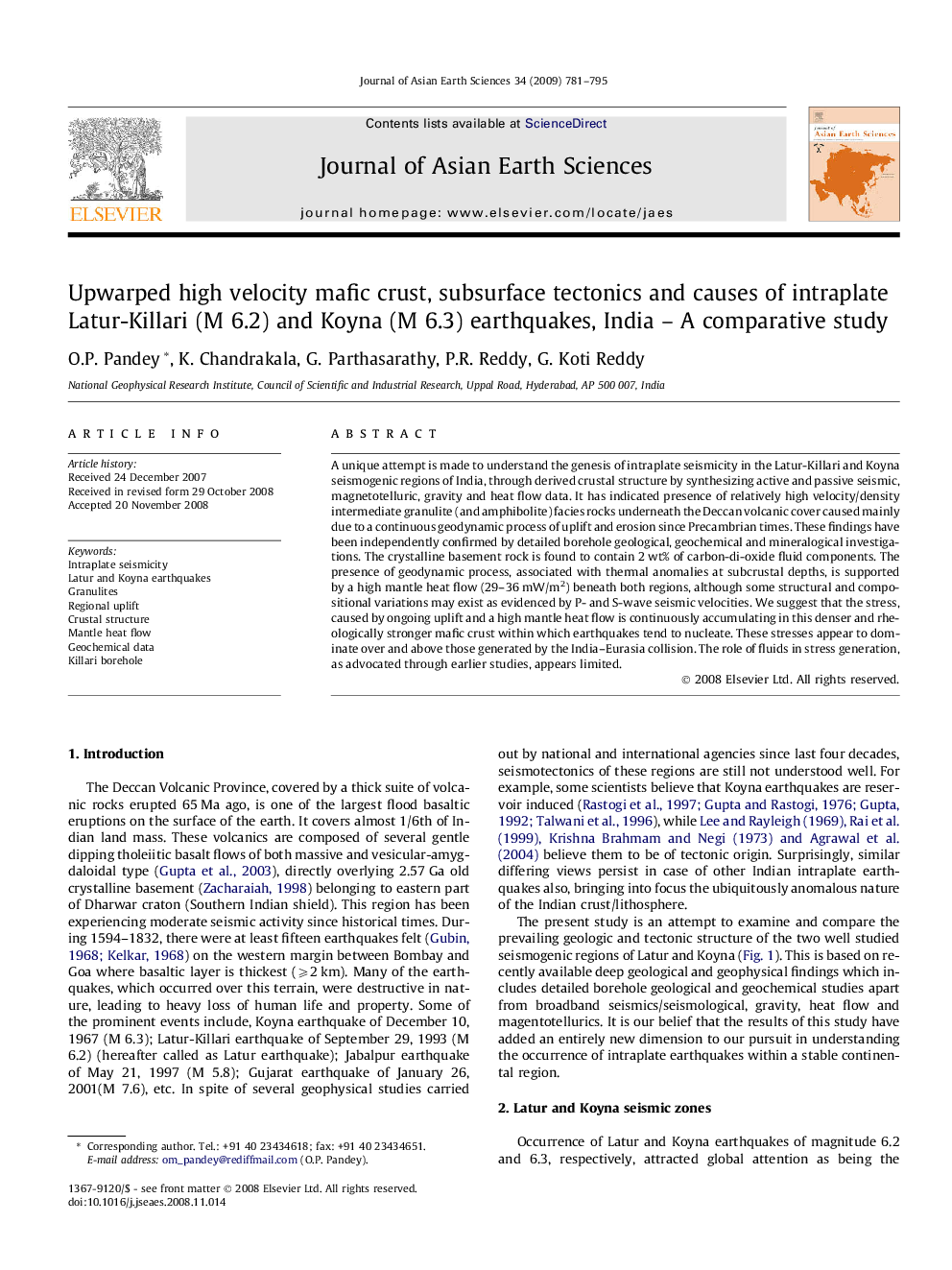| Article ID | Journal | Published Year | Pages | File Type |
|---|---|---|---|---|
| 4732138 | Journal of Asian Earth Sciences | 2009 | 15 Pages |
Abstract
A unique attempt is made to understand the genesis of intraplate seismicity in the Latur-Killari and Koyna seismogenic regions of India, through derived crustal structure by synthesizing active and passive seismic, magnetotelluric, gravity and heat flow data. It has indicated presence of relatively high velocity/density intermediate granulite (and amphibolite) facies rocks underneath the Deccan volcanic cover caused mainly due to a continuous geodynamic process of uplift and erosion since Precambrian times. These findings have been independently confirmed by detailed borehole geological, geochemical and mineralogical investigations. The crystalline basement rock is found to contain 2Â wt% of carbon-di-oxide fluid components. The presence of geodynamic process, associated with thermal anomalies at subcrustal depths, is supported by a high mantle heat flow (29-36Â mW/m2) beneath both regions, although some structural and compositional variations may exist as evidenced by P- and S-wave seismic velocities. We suggest that the stress, caused by ongoing uplift and a high mantle heat flow is continuously accumulating in this denser and rheologically stronger mafic crust within which earthquakes tend to nucleate. These stresses appear to dominate over and above those generated by the India-Eurasia collision. The role of fluids in stress generation, as advocated through earlier studies, appears limited.
Keywords
Related Topics
Physical Sciences and Engineering
Earth and Planetary Sciences
Geology
Authors
O.P. Pandey, K. Chandrakala, G. Parthasarathy, P.R. Reddy, G. Koti Reddy,
